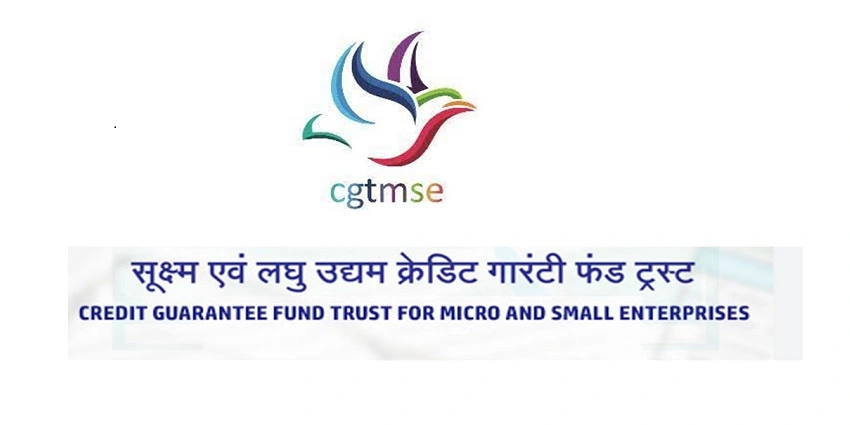CGTMSE Loans: Fueling Small Business Growth

Small businesses are the backbone of our economy, and for many entrepreneurs, securing the right financing is crucial for success. In the realm of business loans, one option that has gained significant attention is CGTmse loans. Understanding the intricacies of these loans is essential for entrepreneurs looking to fuel their business growth without the burden of hefty collateral.
Table of Contents
- Introduction
- What are cgtmse Loans?
- Advantages of cgtmse Loans
- How to Apply
- Common Misconceptions
- Understanding Collateral in cgtmse Loans
- Comparing cgtmse Loans with Traditional Loans
- Conclusion
- Frequently Asked Questions (FAQs)
What are CGTMSE Loans?
CGTMSE stands as a government-backed trust in India, established under the Ministry of Micro, Small and Medium Enterprise (MoMSME) in collaboration with the Small Industries Development Bank of India (SIDBI). Launched in 2000, the CGTMSE scheme extends credit guarantees to financial institutions that lend to Micro and Small Enterprises (MSEs), offering guarantees ranging from 75% to 85% across the nation.
Enterprises meeting the eligibility criteria can benefit from this initiative, obtaining financial support without the conventional constraints of collateral requirements. Within this framework, the scheme secures an applicant’s loan without necessitating external collateral or third-party guarantees. When opting for a loan under CGTMSE, the lending institution receives substantial support from the scheme, guaranteeing a significant portion of the loan. Both new and existing MSMEs under CGTMSE are eligible to access credit facilities up to ₹5 crore.
Advantages of CGTMSE Loans
Low Collateral Requirements
One of the primary advantages of CGTMSE loans is the minimal collateral required. Unlike traditional loans that demand significant assets as security, CGTMSE loans rely on the guarantee provided by the Credit Guarantee Fund Trust.
Simplified Application Process
Navigating the loan application process can be daunting, especially for small businesses. CGTmse loans, however, come with a streamlined application process, reducing the administrative burden on entrepreneurs.
Quick Disbursal of Funds
Time is often of the essence for small businesses. CGTMSE loans offer quick disbursal of funds, ensuring that entrepreneurs can address their financial needs promptly.
How to Apply
Eligibility:
- Under CGTMSE, the trust extends guarantee cover up to Rs 500 lakh for credit facilities sanctioned without requiring collateral security or third-party guarantees. This benefit is applicable to all new and existing Micro and Small Enterprises, encompassing both manufacturing and service sectors, excluding Educational & Training Institutions.
- CGTMSE has recently enhanced its scheme by introducing a Hybrid Security product. This modification allows loans granted to MSE units with partial collateral coverage to be included in the credit guarantee scheme (CGS) of CGTMSE. Specifically, a portion of the loan (up to a maximum of Rs 5.00 Crs) not covered by collateral security can now be protected under CGTMSE.
- Retail Trade activities are eligible for coverage under CGTMSE, with the exposure limit fixed at a maximum of Rs 1.00 Cr.
Extent of guarantee:
The extent of guarantee provided by the trust is based on the category of the borrowers/location of the unit and amount of credit facility being covered under guarantee. The same is as under:
Category | Maximum extent of guarantee where credit facility is | ||
Upto Rs 5 lakh | Above Rs 5 lakh & upto Rs 50 lakh | Above Rs 50 lakh & upto Rs 500 lakh | |
Micro Enterprise | 85% of the amount in default subject to a maximum of Rs 4.25 lakh | 75% of the amount in default subject to a maximum of Rs 37.50 lakh | 75% of the amount in default subject to a maximum of Rs 150 lakh |
Women Entrepreneurs/ Units located in NE region(incl. Sikkim) {other than credit facilities upto Rs 5 lakh to Micro Enterprises} | 80% of the amount in default subject to a maximum of Rs 40 lakh | ||
All other categories of borrowers | 75% of the amount in default subject to a maximum of Rs 37.50 lakh | ||
Retail Trade Activity [Max of Rs 1.00 Cr] | 50% of the amount in default subject to maximum of Rs 50 lakh | ||
- Credit facilities exceeding Rs 200 lakh for a single eligible borrower are eligible for coverage under CGTMSE. However, the guaranteed limit is capped at Rs 200 lakh, even if the sanctioned credit facility surpasses this amount.
- Regarding guaranteed fees, the charges range from 1% to 2% per annum (plus risk premium), contingent on the type of account. As of the current date, the risk premium set by banks is 15%.
Loans sanctioned under Agriculture segment and SHGs are also not eligible to cover under CGTMSE.
Modified FEE Structure:
To enhance the Credit Guarantee Scheme and boost the credit accessibility for MSEs, a decision has been made to reduce the guarantee cost. Additionally, guarantee fees for Retail/Wholesale Trade will now be aligned with those for other activities. The revised Annual Guarantee Fee (AGF) structure under the Credit Guarantee Scheme (CGS – I), applicable to all guarantees approved or renewed on or after April 01, 2023, is outlined in the table below.
Slab | Standard Rate (pa)* |
0-10 lakh | 0.37 |
Above 10-50 lakh | 0.55 |
Above 50-1 crore | 0.60 |
Above 1-2 crore | 1.20 |
Above 2-5 crore | 1.35 |
*Above 2-5 crore 1.35 AGF will be charged on the guaranteed amount for the first year and on the outstanding amount for the remaining tenure of the credit facility. The standard rate is across all activity including trading activity. | |
Applying for CGTMSE loans is a straightforward process. Entrepreneurs can follow a step-by-step guide provided by lending institutions. Additionally, understanding the necessary documentation, such as business plans and financial statements, is crucial for a successful application.
For Bizfinn we provide paper less process for more detail kindly contact us.
Common Misconceptions
CGTMSE (Credit Guarantee Fund Trust for Micro and Small Enterprises) is a scheme in India that provides collateral-free credit facilities to micro and small enterprises. While the scheme aims to support small businesses, there can be misconceptions about CGTMSE loans. Here are some common misconceptions:
Misconception: cgtmse provides direct loans to businesses.
- cgtmse itself does not provide loans. It provides a credit guarantee to financial institutions like banks and NBFCs to encourage them to lend to micro and small enterprises without requiring collateral.
Misconception: All MSME loans are automatically covered by ctmse.
- Not all MSME loans are automatically covered by cgtmse. Lenders need to apply for the guarantee cover, and there are eligibility criteria that both the borrower and the lender must meet.
Misconception: It covers 100% of the loan amount.
- It typically covers a percentage of the default amount, not the entire loan amount. The coverage percentage varies based on the loan amount and the category of the enterprise.
Misconception: It covers any type of business without restrictions.
- There are certain exclusions and restrictions on the types of businesses eligible for CGTMSE coverage. For example, speculative businesses, educational institutions, and agricultural activities may not be eligible.
Misconception: Once a business gets cgtmse coverage, it is guaranteed loan approval.
- While it provides a guarantee, the lender still assesses the creditworthiness of the borrower. The approval of the loan is subject to the lender’s evaluation of the business’s financial health and viability.
Misconception: cgtmse eliminates the need for a business plan and documentation.
- Lenders still require businesses to submit a detailed business plan and necessary documentation for loan processing, even with CGTMSE coverage. The evaluation process may vary, but basic documentation is still necessary.
Misconception: It covers all types of loans and financial products.
- It is primarily designed for term loans and working capital facilities. It may not cover other financial products like overdrafts or non-funded facilities.
Misconception: cgtmse eliminates the risk for the borrower.
- While CGTMSE provides a credit guarantee, borrowers are still responsible for repaying the loan. Defaulting on the loan can have consequences for the business, including potential legal action by the lender.
It’s important for businesses and lenders to understand the specific terms and conditions of CGTMSE to make informed decisions regarding loans and guarantees. Consulting with financial experts and CGTMSE officials can help clarify any uncertainties.
Understanding Collateral in CGTMSE Loans
In the context of CGTMSE (Credit Guarantee Fund Trust for Micro and Small Enterprises) loans, one of the key features is that they are collateral-free or require minimal collateral. Let’s break down the understanding of collateral in CGTMSE loans:
Collateral-Free Nature:
- It aims to facilitate credit to micro and small enterprises without the need for third-party collateral or personal guarantees.
- Traditional loans often require borrowers to pledge assets like property, machinery, or personal assets as collateral to secure the loan. cgtmse eliminates or reduces this requirement.
Coverage Limit:
- It provides a credit guarantee coverage to lenders, covering a certain percentage of the defaulted amount in case the borrower fails to repay.
- While the loan is collateral-free for the borrower, the guarantee coverage is not for the entire loan amount. The coverage percentage varies based on the loan amount and the category of the enterprise.
Loan Amounts and Guarantee Coverage:
- It typically provides coverage up to a certain limit, and this limit can vary. For example, as of my last knowledge update in January 2022, the coverage was up to 85% for loans up to Rs. 5 lakh and 50-75% for loans above Rs. 5 lakh up to Rs. 2 crore, depending on the category of the enterprise.
Eligibility Criteria:
- To avail of the cgtmse guarantee, both the borrower and the lending institution need to meet certain eligibility criteria.
- Lenders may still consider the creditworthiness of the borrower, but the collateral requirement is significantly reduced compared to conventional loans.
Exclusions:
- Certain types of businesses may be excluded from cgtmse coverage. For example, speculative businesses, educational institutions, and agricultural activities might not be eligible.
Additional Collateral for Uncovered Portion:
- In some cases, lenders may ask for additional collateral for the portion of the loan amount not covered by the cgtmse guarantee.
- This additional collateral requirement, if any, would depend on the policies of the lending institution.
Documentation:
- While these loans are designed to be collateral-free or with minimal collateral, borrowers are still required to provide documentation related to their business plan, financials, and other relevant information.
Risk Mitigation:
- It acts as a risk mitigation mechanism for lenders, encouraging them to extend credit to MSMEs that may not have sufficient tangible collateral.
It’s essential for borrowers to thoroughly understand the terms and conditions of It and work closely with the lending institution to meet the requirements for availing the credit guarantee. Additionally, given that policies and terms can evolve, it’s advisable to check for the latest information and updates from cgtmse or relevant authorities.
Comparing CGTMSE Loans with Traditional Loans
Collateral Requirements:
- CGTMSE Loans:
- Collateral-free or minimal collateral is required. The primary focus is on providing credit support to micro and small enterprises without the burden of extensive collateral.
- The credit guarantee provided by CGTMSE covers a portion of the defaulted amount, reducing the need for tangible collateral.
- Traditional Loans:
- Typically require substantial collateral, such as property, machinery, or personal assets, to secure the loan.
- Collateral serves as a security for the lender in case of default and helps mitigate their risk.
Risk Mitigation:
- CGTMSE Loans:
- CGTMSE acts as a credit guarantee fund, providing a safety net for lenders. It encourages them to extend credit to MSMEs that may not have sufficient collateral.
- The credit guarantee covers a percentage of the defaulted amount, reducing the risk for the lending institution.
- Traditional Loans:
- Lenders rely heavily on collateral to mitigate the risk associated with lending. The value of the collateral is crucial in determining the amount of credit that can be extended.
Eligibility Criteria:
- CGTMSE Loans:
- Geared towards micro and small enterprises meeting certain criteria. However, not all businesses may qualify, and there are exclusions based on the nature of the business.
- Traditional Loans:
- Eligibility criteria can vary but often involve a comprehensive evaluation of the borrower’s financial stability, credit history, and the ability to repay the loan.
Loan Amounts:
- CGTMSE Loans:
- Typically designed for smaller loan amounts, catering to the needs of micro and small enterprises.
- Traditional Loans:
- Can cater to a wider range of loan amounts, including larger sums for medium and large enterprises.
Application Process:
- CGTMSE Loans:
- The application process is designed to be streamlined and accessible, with a focus on supporting small businesses.
- Traditional Loans:
- The application process can be more detailed and may involve a thorough examination of the borrower’s financials, business plan, and other documentation.
Interest Rates:
- CGTMSE Loans:
- Interest rates may vary, but CGTMSE loans are designed to be affordable to encourage MSMEs to access credit.
- Traditional Loans:
- Interest rates can vary based on market conditions, the borrower’s creditworthiness, and other factors. They may be influenced by the level of risk perceived by the lender.
Processing Time:
- CGTMSE Loans:
- The processing time is often faster compared to traditional loans, given the simplified collateral requirements and streamlined application process.
- Traditional Loans:
- Processing times can be longer, especially for larger loan amounts, due to the comprehensive evaluation and documentation required.
Sector Coverage:
- CGTMSE Loans:
- Primarily focused on micro and small enterprises across various sectors.
- Traditional Loans:
- Can cater to businesses across different sizes and sectors, including medium and large enterprises.
Conclusion
In conclusion, CGTMSE loans represent a valuable avenue for small businesses seeking financial support. With low collateral requirements, a simplified application process, and quick disbursal of funds, these loans can be a game-changer for entrepreneurs. By dispelling misconceptions, understanding the intricacies of collateral, and learning from success stories, businesses can navigate the world of CGTmse loans with confidence.
Frequently Asked Questions (FAQs)
What is the eligibility criteria for CGTMSE loans?
Eligibility criteria for CGTMSE loans include the classification of micro and small enterprises, compliance with the definition of MSMEs, and exclusion of certain sectors. It’s essential to check specific criteria outlined by CGTMSE and lending institutions.
How long does it take for CGTMSE loans to be approved?
The approval time for CGTMSE loans varies but is generally faster compared to traditional loans. It depends on the lender’s internal processes, the completeness of documentation, and the specific details of the loan application.
Can startups benefit from CGTMSE loans?
Yes, startups can benefit from CGTMSE loans, provided they meet the eligibility criteria. CGTMSE supports micro and small enterprises, including startups, by offering collateral-free or minimally collateralized credit facilities.
Are CGTMSE loans available for all business sectors?
No, CGTMSE loans are not available for all business sectors. Certain excluded sectors, such as speculative activities, educational institutions, and agricultural activities, may not be eligible. It’s important to check the specific sector eligibility criteria outlined by CGTMSE.
What happens if a business fails to repay a CGTMSE loan?
If a business fails to repay a CGTMSE loan, the lender can initiate the recovery process. The credit guarantee provided by CGTMSE covers a portion of the defaulted amount, reducing the lender’s risk. However, the borrower remains responsible for repaying the outstanding loan amount, and default consequences may include legal action and damage to the business’s creditworthiness..


